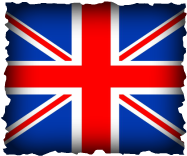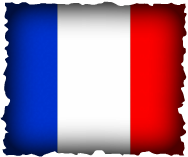Causes of the War
The French and Indian War from 1754-1763 was a conflict between Great Britain and France over their territorial possessions in North America. Both countries wanted control of the Ohio River Valley because of the profitable fur trade. The two countries could not agree on their boundaries. The British claimed land along the Atlantic Coast to the Appalachian Mountains. The French settlements were north of the British colonies along the Saint Lawrence River and the Great Lakes and southward to the Mississippi River. Both claimed the land between the Appalachian Mountains and the Mississippi River known as the Ohio River Valley. Both countries wanted to reap economic benefits of the profitable fur trading and were willing to fight for control of North America.
Battles
To secure their hold on the land, the French built forts along the St. Lawrence River and the Great Lakes to keep away the British fur traders and settlers. The British set out to capture the French forts and to drive the French from the North American continent. Both the British and French had the support of the Native Americans and the troops from their home countries in fighting for control of the land.
The American colonists joined with the British to drive out the French. As a young twenty-two year old Major in the Virginia Militia, George Washington led colonial troops to force the French troops to withdraw from their forts along the Allegheny River. Washington’s troops were attacked and defeated at Ft. Duquesne in present-day Pittsburgh, Pennsylvania. This was the first battle of the war.
The most significant battle of the French and Indian War was fought in Canada. The fort at Quebec was the main fortress for France because it supplied all of the other French forts in colonial America. The British knew that if they captured Quebec, they would win the war. In early 1759, British General James Wolfe laid siege to Quebec with 9,000 soldiers. When the French surrendered, this was the turning point of the war. Now the British would soon control all of North America.
Results
The Treaty of Paris in 1763 ended the French and Indian War between Great Britain and France. France ceded (gave up) its territory in North America (including Canada) to Great Britain. Spain ceded Florida to Britain and in return received the lands west of the Mississippi River.
The end of the French and Indian War however resulted in a large debt that the British Parliament decided would be repaid by imposing higher taxes on the American colonies. The British felt the colonists benefited the most from the war and should help pay for the war debt. It is evident that conditions arising from the French and Indian War helped set the stage for the colonial revolt against the British and is considered the first step of the American Revolution.
The French and Indian War from 1754-1763 was a conflict between Great Britain and France over their territorial possessions in North America. Both countries wanted control of the Ohio River Valley because of the profitable fur trade. The two countries could not agree on their boundaries. The British claimed land along the Atlantic Coast to the Appalachian Mountains. The French settlements were north of the British colonies along the Saint Lawrence River and the Great Lakes and southward to the Mississippi River. Both claimed the land between the Appalachian Mountains and the Mississippi River known as the Ohio River Valley. Both countries wanted to reap economic benefits of the profitable fur trading and were willing to fight for control of North America.
Battles
To secure their hold on the land, the French built forts along the St. Lawrence River and the Great Lakes to keep away the British fur traders and settlers. The British set out to capture the French forts and to drive the French from the North American continent. Both the British and French had the support of the Native Americans and the troops from their home countries in fighting for control of the land.
The American colonists joined with the British to drive out the French. As a young twenty-two year old Major in the Virginia Militia, George Washington led colonial troops to force the French troops to withdraw from their forts along the Allegheny River. Washington’s troops were attacked and defeated at Ft. Duquesne in present-day Pittsburgh, Pennsylvania. This was the first battle of the war.
The most significant battle of the French and Indian War was fought in Canada. The fort at Quebec was the main fortress for France because it supplied all of the other French forts in colonial America. The British knew that if they captured Quebec, they would win the war. In early 1759, British General James Wolfe laid siege to Quebec with 9,000 soldiers. When the French surrendered, this was the turning point of the war. Now the British would soon control all of North America.
Results
The Treaty of Paris in 1763 ended the French and Indian War between Great Britain and France. France ceded (gave up) its territory in North America (including Canada) to Great Britain. Spain ceded Florida to Britain and in return received the lands west of the Mississippi River.
The end of the French and Indian War however resulted in a large debt that the British Parliament decided would be repaid by imposing higher taxes on the American colonies. The British felt the colonists benefited the most from the war and should help pay for the war debt. It is evident that conditions arising from the French and Indian War helped set the stage for the colonial revolt against the British and is considered the first step of the American Revolution.
Note Questions:
1. What was the major cause of the French & Indian War?
2. Why was the Ohio River Valley so important?
3. What were the terms of the Treaty of Paris of 1763?
4. What happened after the French and Indian war?
1. What was the major cause of the French & Indian War?
2. Why was the Ohio River Valley so important?
3. What were the terms of the Treaty of Paris of 1763?
4. What happened after the French and Indian war?


